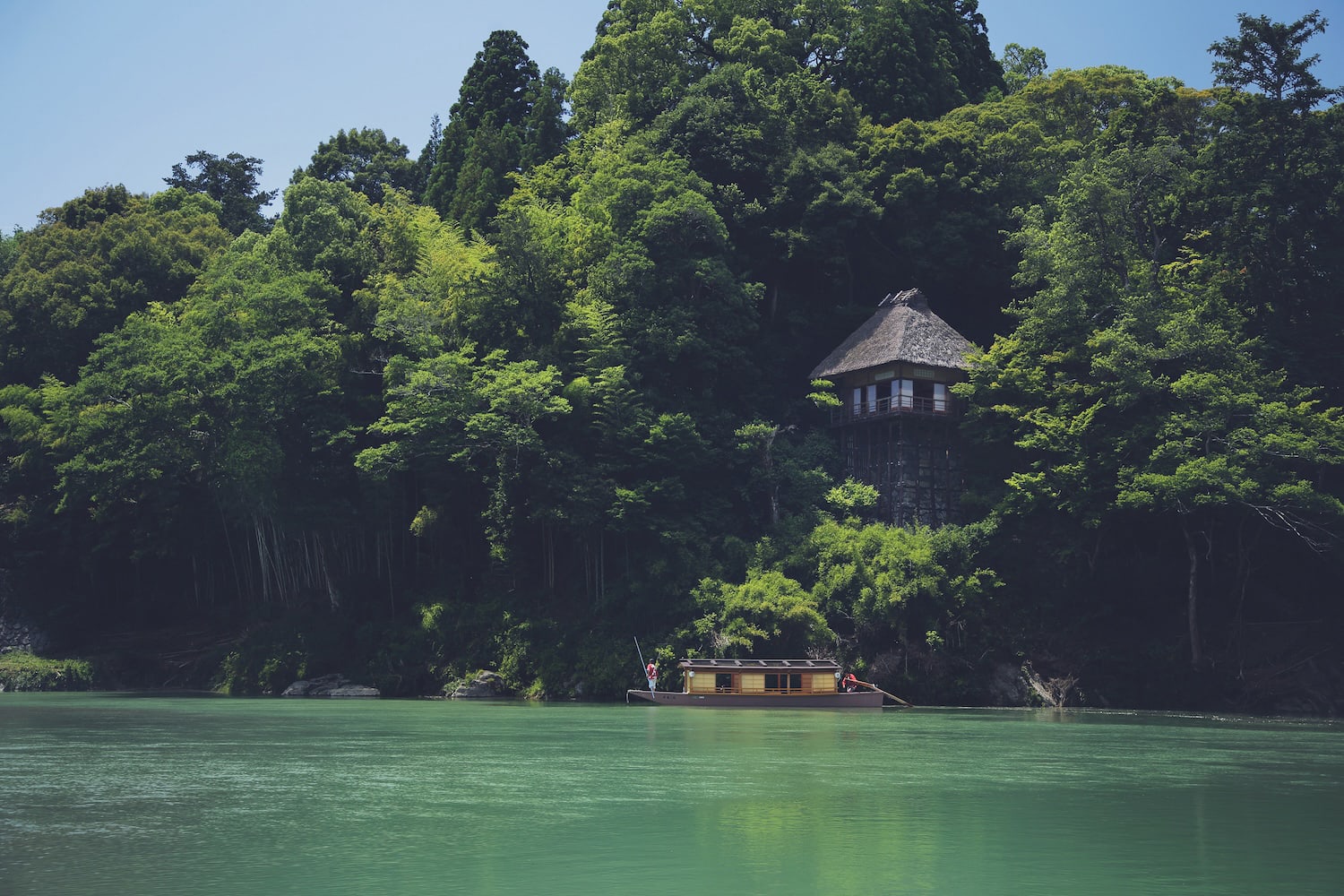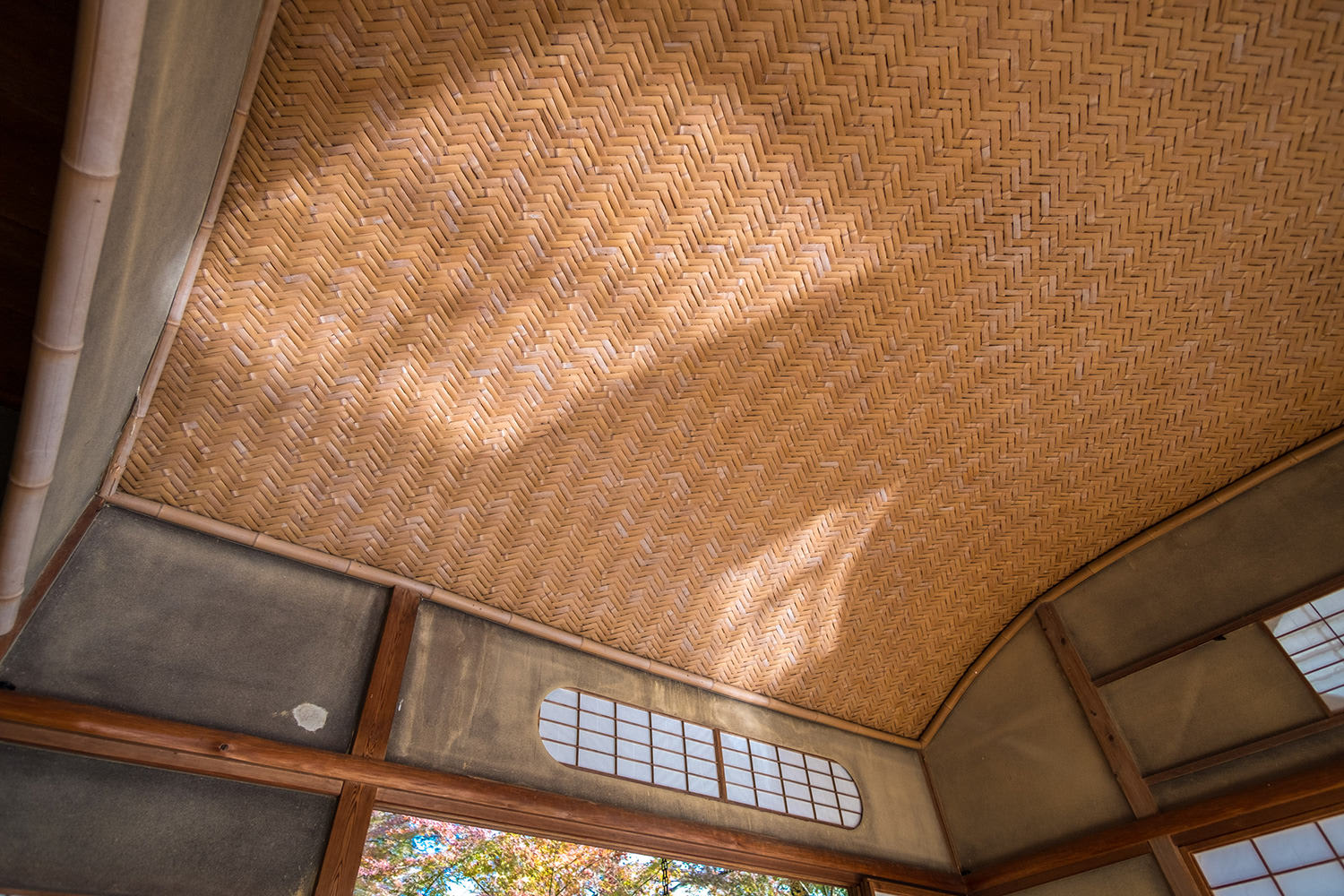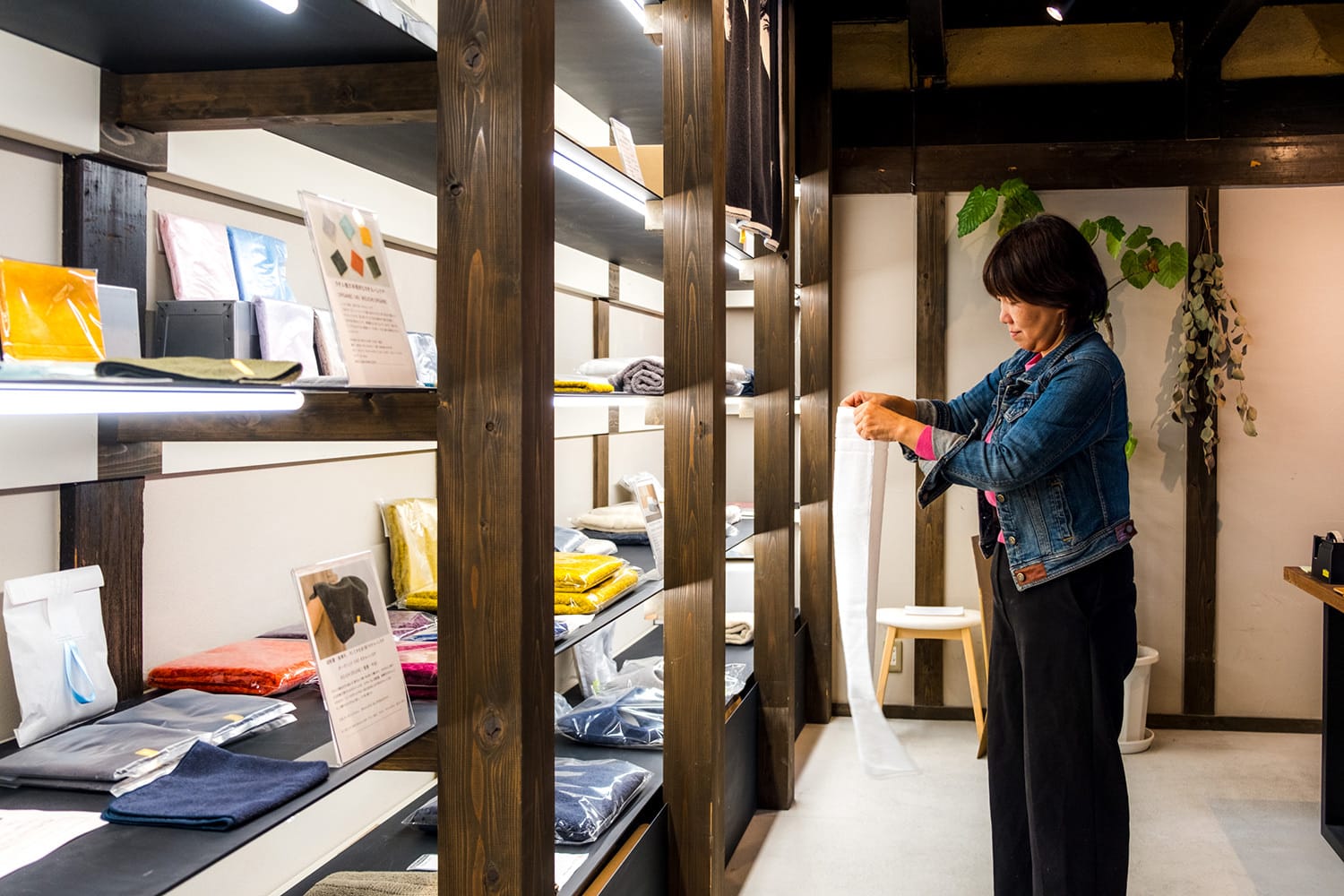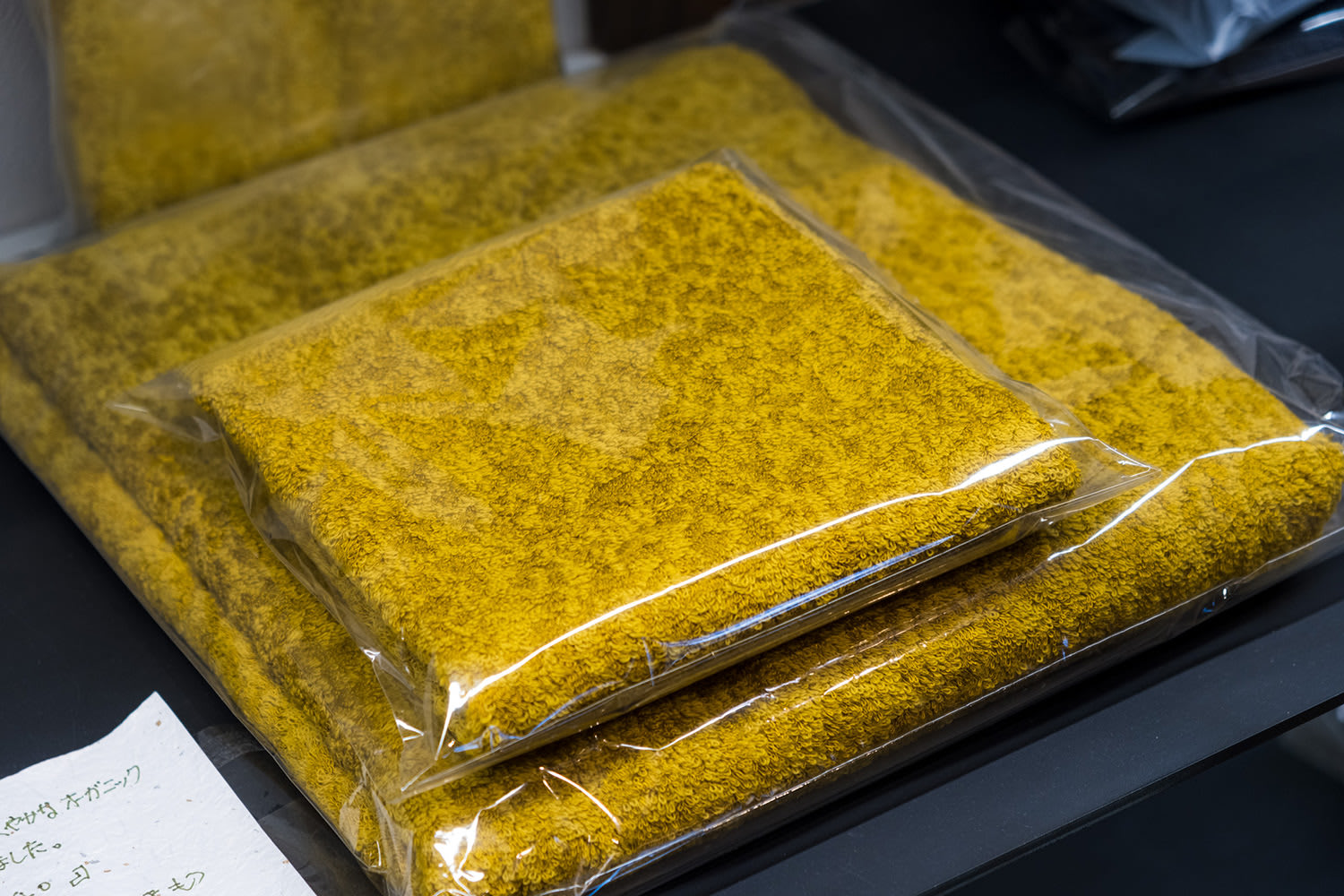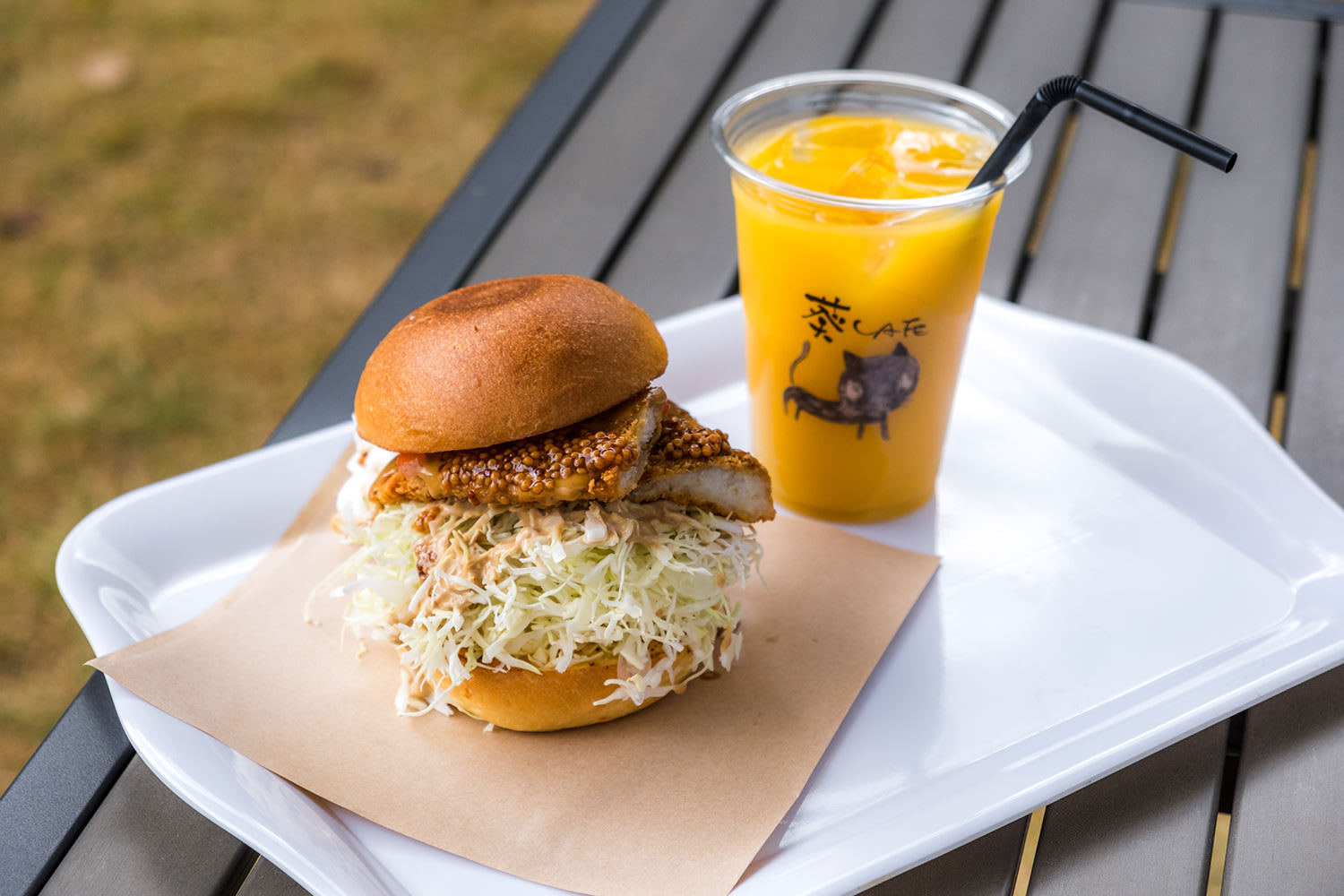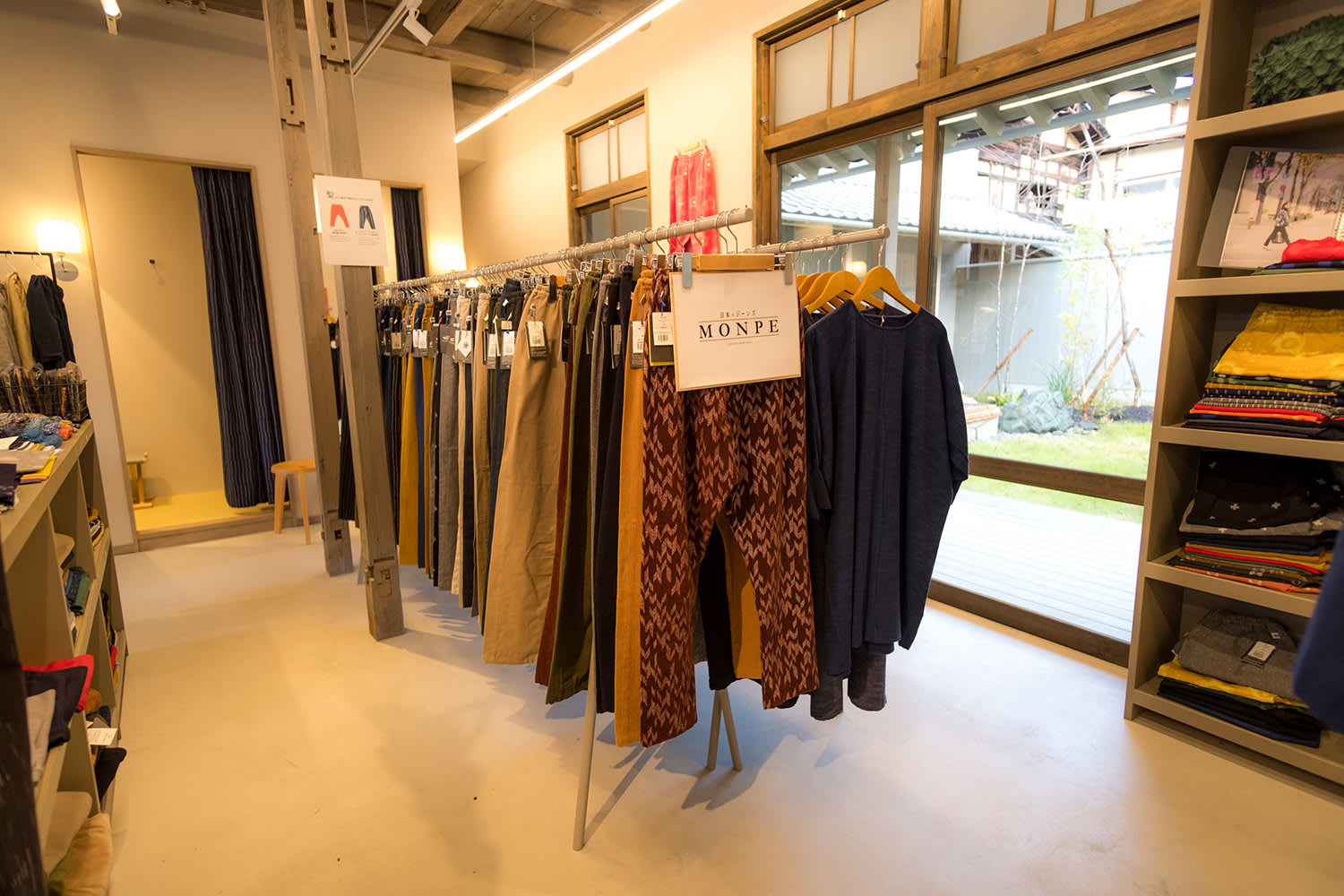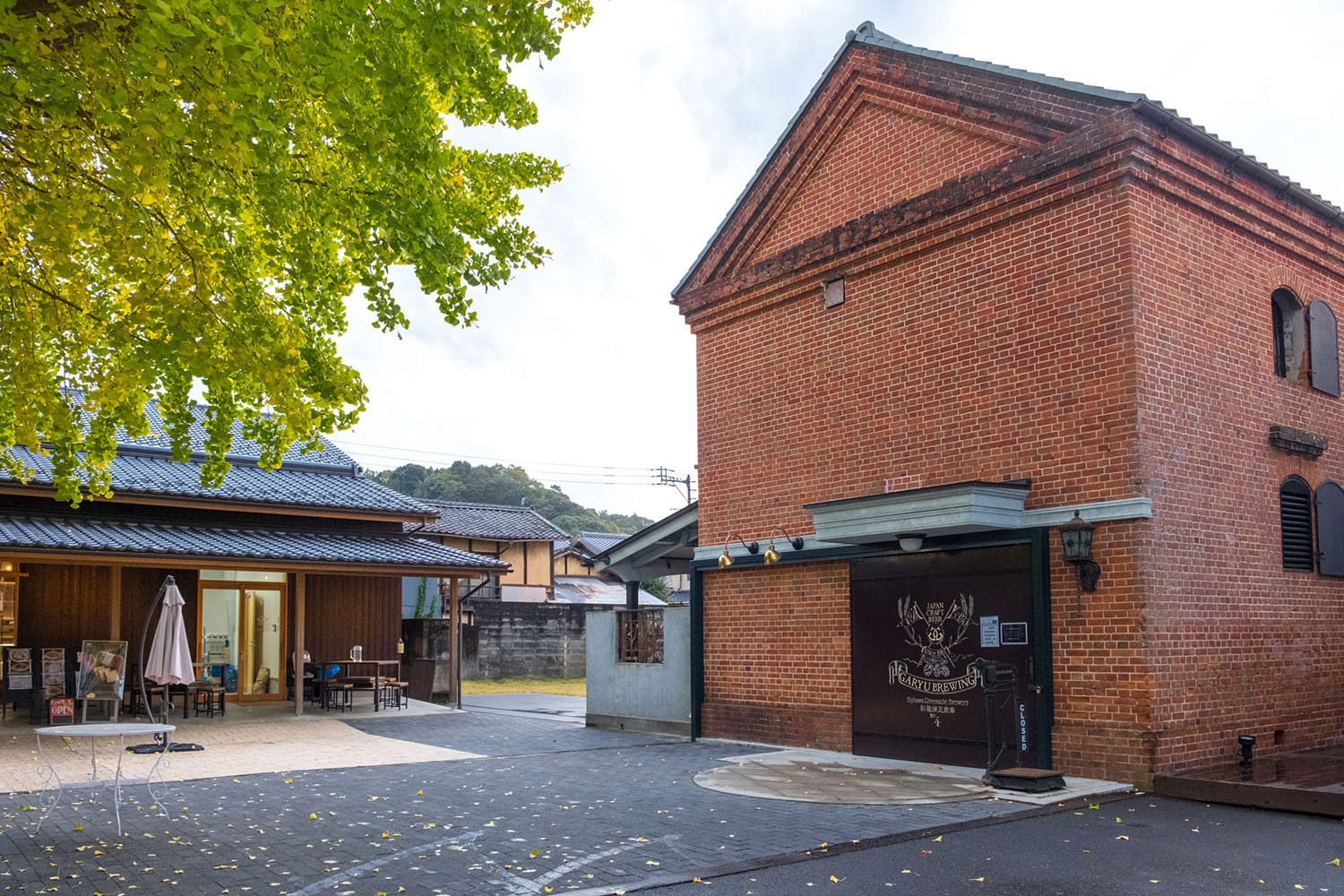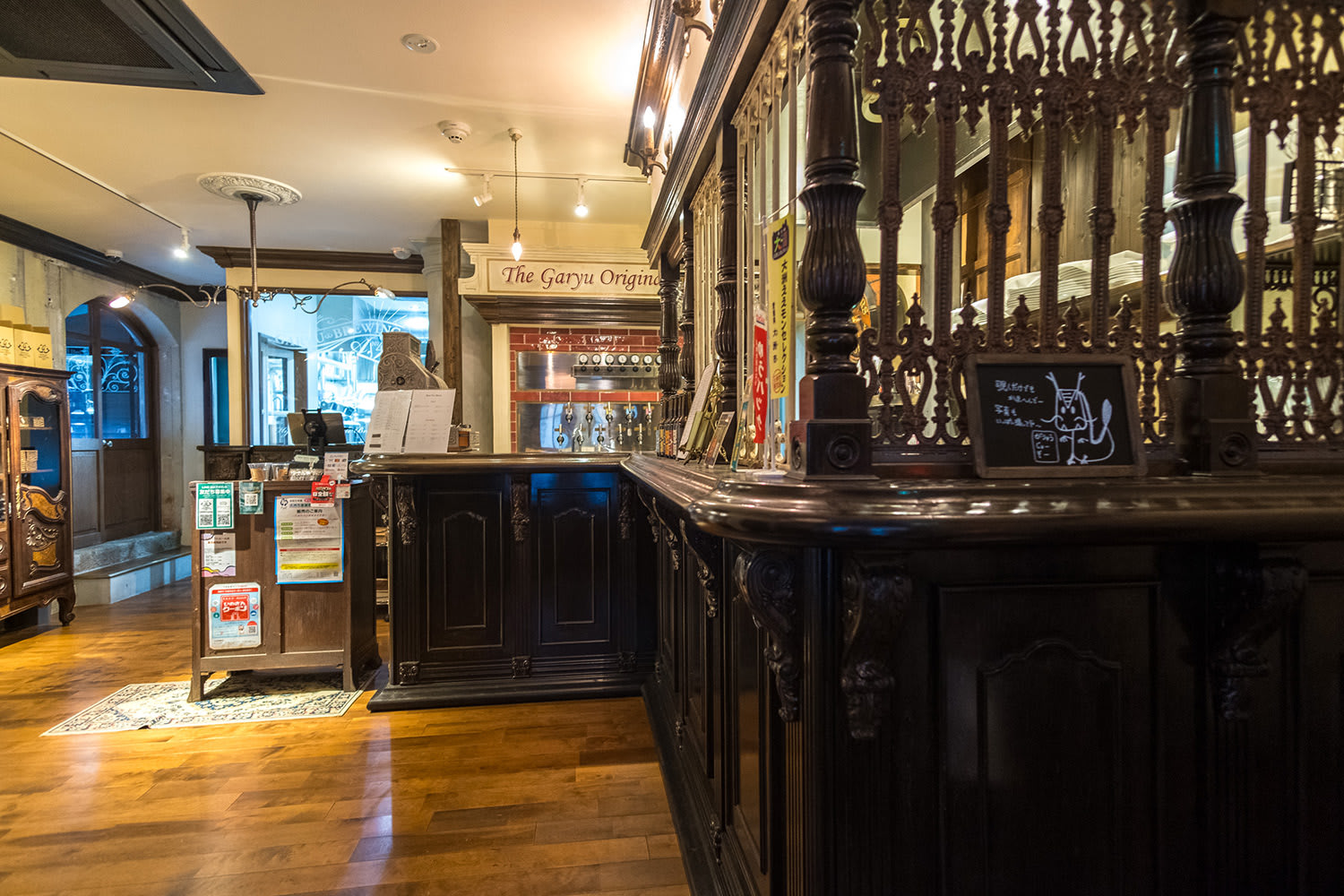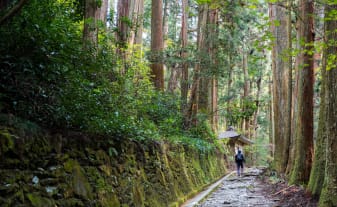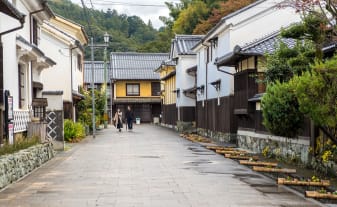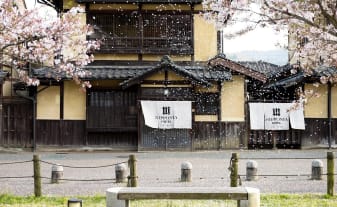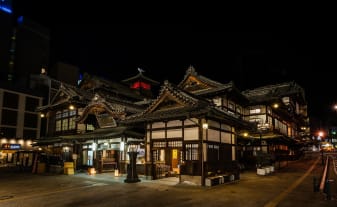 STORIES & GUIDES
STORIES & GUIDES
Japan Travel Inspiration 03: A Walking Tour Through the Charming Old Town of Ozu & Interact with the Locals

“Ozu had basically fallen into a long sleep,” says Diego Cosa Fernandez of the Kita Management Group. It is with Diego, a director at the destination management organization in Ozu, with whom I will be taking a tour through Ehime's Ozu Old Town. And this is a good thing indeed. Although this was not my first visit to Ozu, I had yet to fully grasp Ozu’s history, why it was home to numerous historic merchant houses, or the reasons behind its recent recognition as a sustainable tourism destination.
And it is from Diego that I will gain valuable insights into the city's history and significance. During this walking tour, down Ozu's nostalgic alleyways and past many renovated historic properties, I learned about the city's rise to prominence over a hundred years, its decline, and its more recent transformation into becoming an exciting place to visit, live, and work.
While Ozu's most famous sights—its newly reconstructed Ozu Castle and riverside Garyu Sanso Villa—are a must-see for anyone visiting Ozu, it’s the city’s tastefully renovated historical properties, trendy shops, fashionable cafes, and the people running these businesses, that I looked forward to visiting during my one day of exploring Ozu on foot.
-
First, Let’s Take a Deep Dive into Ozu's History
So why has Ozu become such a popular destination in the past decade? Diving into the city's history is essential to add more depth to my tour through Ozu, and I couldn’t have had a better guide to introduce me to it.
Diego explained: “The Hijikawa River was the thing that allowed the town to develop,” says Diego. “The river was used to export and send all the goods being produced in the area to the rest of Japan.”
As Diego explained, Ozu experienced its peak in economic development during the Meiji (1868-1912) and Taisho (1912-1926) eras. Luxury goods such as raw silk, washi paper, and sumac wax were transported down the Hijikawa River, and many of Ozu's historic buildings, owned by wealthy merchants, were constructed during this period.
As Diego explained, Ozu experienced its peak in economic development during the Meiji (1868-1912) and Taisho (1912-1926) eras. Daily goods and raw materials such as washi paper, silk, cocoons, thread, and sumac wax were transported down the Hijikawa River, and many of Ozu's historic buildings, owned by wealthy merchants, were constructed during this period. -
With the decline of river transport in favor of railways and motorized vehicles, Ozu gradually experienced a decline in economy. Over time, locals moved out and many abodes became unoccupied. Later on, under long-term abandonment, they began to deteriorate.
Upon noticing the dire condition of some of these buildings, a group of locals took it upon themselves to clean up some of the structures to house events and reintroduce the charm of Ozu’s nostalgic era. What started as a small grassroots group snowballed into a significant collaborative effort in 2018 between the city, businesses, advisors, and a local bank. The Kita Management was created to reintroduce and enhance life into the Ozu’s historic buildings. -
Today, Ozu has 26 restored buildings, including NIPPONIA hotel rooms, all meeting the sustainability standards set by Kita Management, which Diego is a part of. These sustainable measures even earned Ozu recognition for its renovation efforts, winning the top spot in the ‘Culture & Tradition‘ category of the Green Destinations Story Awards.
“We were able to reverse 100 years of decay in less than 10 years,” Diego says. As he explains, it is essential that Ozu is not just a tourist destination but that they can nurture community conversation and make Ozu a place where people want to live and care for. During my walking tour and day exploring, I witnessed this narrative in action. -
Starting My Ozu Walking Tour with Breakfast at NIPPONIA HOTEL
After waking up hungry after a sound sleep under hand-hewn beams, I started the following day at my NIPPONIA Hotel accommodation in a restored two-story merchants' house. NIPPONIA’s decentralized concept, spread across multiple buildings in Ozu Old Town, also encouraged me and other guests to explore the town on foot, with cozy cafes, trendy stores, and local restaurants right outside my front door.
-
My breakfast experience, located in the TUNE building just a stroll away, was a delightful exploration of Ozu's seasonal cuisine. Being here in autumn, I had a fall-inspired meal, with imo taki — a local specialty— as the star attraction. This simple yet delicious soup, made from Japanese taro root, chicken, and green leek, is also a part of an autumn tradition in Ozu. Large pots of imo taki are prepared and served to people on the river banks under an illuminated castle backdrop — an event I made a mental note to partake in on my next Ozu visit, as wrapped I up my meal to meet Diego to visit one of Ozu's primary destinations — Garyu Sanso Villa.
-
Visit the Architectural Japanese Masterpiece in Ozu of Garyu Sanso Villa
Garyu Sanso Villa is, by far, one of the most charming examples of a traditional style of Japanese architecture I have ever seen. After encountering this beauty during my first solo visit to Ozu, I practically dragged my partner off course from a separate Ehime road trip so that he could experience the wonder of this building for himself.
Located on the eastern corner of the old town, Garyu Sanso Villa comprises several pavilions, all imbued with the wabi-sabi spirit of tea ceremony. Commissioned by an Ozu-born trading merchant, this villa complex took over a decade to complete, with the assistance of craftsmen from Kyoto and skilled local carpenters. As the morning light filtered through the autumn tree foliage and danced off the neighboring river, I didn’t have to guess why the merchant committed ten years to build his dream villa here. -
The Garyu-in, with its impressive thatched roof and spacious interior, is full of playful architectural details that invite you to search for them. Even impressive features might go unnoticed without the trained eye of an architect or historian. Diego asked quizzically if I noticed anything missing, so I took a good look at the building. After making a few incorrect guesses, Diego came to my rescue and pointed out the missing element.
-
“There are no central supporting pillars, and any other supporting beams are concealed” he pointed out, " carpenters used truss beams, a Western building technique. A much lighter structure allows for fewer obstructing vertical elements." Indeed, after he pointed it out, I noticed that the Garyu-in was much taller and spacious than a typical Japanese folk house. Looking around, it's evident that even the carpenters who built this building had a lot of fun designing it.
-
Even after multiple visits, I still discover new architectural details: whimsical bat designs on door knobs, signatures stamped into iron nails and carved into lacquerware flooring. I am sure there's more to uncover—just some of the subtle but delightful details I can appreciate and look forward to on each return.
One of the most exceptional features of the Garyu Sanso Villa is the Furo-an teahouse. As explained by Diego, the teahouse uses the kaketsukuri building method, a unique construction approach that employs stilts to erect stand-alone buildings on steep slopes and rocky hillsides. -
Another praiseworthy feature is its ceiling. Made from a single, woven bamboo sheet, it elegantly reflects the river's ripples across the ceiling during certain times of the day. I’m told the view is more spectacular at night during the full moon. As an overnight guest at Ozu Castle, you can visit the Furo-an teahouse during closed hours for breakfast and a private tea ceremony, which is included in your castle stay package. Imagine sitting in the tatami room, looking out and watching the morning light come in, its reflection bouncing off the river to create intricate light designs on that ceiling!
-
Experience the Old Town Spirit of Nostalgic Japan in a Kimono at Antique Nazuna
In Honmachi street, one of Ozu’s old-district thoroughfares, we started exploring some new businesses that have opened in 2016. One of them is Antique Nazuna, which is the perfect spot I’m ever in the mood to dress up in a traditional Japanese kimono or yukata.
-
The owner, Yosie Kawada, came to Ozu in search of a place to start her business of providing kimono and yukata rental experiences. She spent eight years restoring this kominka (old house) property with the help of her local network. Now, she offers alternations and rents kimonos and yukatas so visitors can enjoy the old-town spirit in style.
-
“Antique Nazuna is especially popular during Ozu's summertime night markets and festivals,” explains Kawada-san. Visitors can enjoy the lively atmosphere while strolling through Ozu's charming alleyways, dressed in traditional yukata or kimono.
I couldn’t think of a better backdrop than the townscape of Ozu to experience this old-world charm of Ozu while in a kimono. -
Savoring Authentic Japanese Wagashi Sweets at Saryo Hiranoya
Next, we headed to Saryo Hiranoya for a brief tea break and a plate of Ozu's authentic local wagashi sweets. This traditional Japanese cafe is owned and managed by Hirai-san, who comes from a family dealing with traditional Japanese desserts known as wagashi.
-
Coming from a father who owned a sweet shop in Ozu, Hirai-san initially pursued a different career path. First studying biology, he turned his attention back to his family's legacy by relocating to Kyoto to study the art of making wagashi, where he spent eight years honing his skills. After returning to his hometown of Ozu, Hirai-san and his younger brother, took advantage of the new sustainable business model Ozu offered to young entrepreneurs, and focused on honwarabi mochi and a local Ozu delicacies called shigure.
Shigure steamed cakes are a confectionery once enjoyed by feudal lords in the Ozu domain during the Edo period. Even today, these cakes are made using a blend of red beans, rice flour, and sugar. I decided to try their signature item, honwarabi mochi. This unique jelly-like delicacy was freshly prepared and hand-kneaded to order, and as I am cautioned, best eaten within 20 minutes of preparation. With the soft, smooth texture and the subtle sweetness, it was a perfect balance to the bitterness of the frothy green tea that came with the set. -
Try These Unusual Freshly Made Dessert Sandwiches at Umi to Kamome
Never one to turn down another dessert, we headed to a modern dessert option at Umi to Kamome. Here, Umi to Kamome has perfected the art of sandwiching fresh fruits between two slices of bread with a layer of whipped cream. While this may seem like an unusual sandwich offering (especially compared to my typical peanut butter and jam sandwich staple), there may be no better place to try it than here in Ozu. As I am told, Umi to Kamome was originally a food truck, their sandwiches so wildly popular that they were almost impossible to keep in stock.
-
In 2022, Umi to Kamome opened a permanent store in Ozu, so I didn’t have to track down a food truck to try one of their dessert creations. After ordering the persimmon-sliced sandwich, I found it an interesting twist on Japanese desserts. While not rooted entirely in Japanese history, this creation exudes a confident Japanese dessert vibe. This paired perfectly with a cup of coffee I ordered from the shop counter to enjoy on the go.
-
-
Add These Stylish Towels to Your Bathroom at Ozu Plus
If I had more space in my luggage, I would have brought back some of the stylish bathroom towels from Ozu PLUS to replace my worn-out collection back home. Yamaki-san, who originally hails from Ozu, runs Ozu PLUS (OZU+), specializing in Ehime-made towels, groceries, and handicrafts made from local raw materials produced in Ozu.
-
As the Ozu native explains, she left Ozu after high school and went to school in Tokyo. After COVID-19, she longed to return to her roots when she heard about Ozu’s business initiative. As a former employee of Ikeuchi Organic, famous for its high-quality organic cotton towels, Yamaki-san was convinced that the time was right to move back home and share her love of organic towel products.
-
She opened her new business into the beautifully renovated old folk house, where she sells her wide range of products that use raw materials sourced from Ozu, including local paper art, hinoki cypress air fresheners, mandarin orange juice, and fresh vegetables from local farmers.
While we shopped, locals regularly dropped in to say their hellos. I couldn’t help but think that this act of connection served as a reminder that Yamaki-san is one of many figures to embody Ozu's new and revitalized energy. -
Dine on this Difficult-to-Prepare, but Delicious Local Burger at Aoi Cafe
Local specialties are always on the menu here in Ozu, and one place to find this is Aoi Cafe. As we entered the cafe, the colorful collection of artwork on the walls welcomed us, only overshadowed by the owner’s warm, inviting smile. Fumi Yonezawa, the owner of Aoi Cafe, originally from Kochi Prefecture, made her home in Ehime as a teenager. After launching an izakaya restaurant in Ozu with her husband, she realized she wanted to offer something unique to daytime visitors strolling around the historical town.
To create a unique menu, they devised the hamo katsu burger, a deep-fried daggertooth pike conger, a fish notoriously difficult to prepare due to its numerous small bones. However, her husband’s experience in izakaya cuisine gave Aoi Cafe the necessary expertise to create this local burger. -
Layered with crunchy cabbage and tomatoes, this was a wonderfully mouthwatering, savory meal, complemented by the outdoor seating area behind the cafe. This terrace is also a part of the NIPPONIA Hotel and is typically reserved for guests. However, guests of the Aoi Cafe can dine in the courtyard of NIPPONIA Hotel from 12:00 to 15:00 — a lovely chance for me to enjoy my delectable burger basking in the natural ambiance of this fine autumn day in Ozu.
-
Unagi no Nedoko: Shop For Fashionable Items from Ehime and Beyond
At this point, I parted ways with Diego and continued shopping at Unagi no Nedoko. Housed in a beautifully renovated old maternity clinic, this Ozu branch of the Kyushu-based ‘select shop’ specializes in regional-specific products from the Ehime and Setouchi areas, including an array of locally-made crafts, home goods, and their Monpe lineup, a collection of updated traditional agricultural work trousers.
-
While browsing their newest collection, I got a chance to speak more candidly to the shop employees. One of the people I spoke with was a shop assistant born and raised in Ozu. When I asked him about the recent revival of the town, he told me, "During the school holidays, I returned from university and was amazed to see how many people were visiting my hometown." Before the recent revival, he couldn't imagine returning to his hometown without any job prospects. However, in just a few years, Ozu's reintroduction of life into old houses led to more business and job opportunities, which brought many Ozu natives back home to their beloved town.
-
In addition to the items from all over Japan, I browsed the works and crafts of local designers, artisans, and household goods. Once again, I felt the pangs of disappointment in my lack of luggage space.
-
Try Charcoal-grilled Regional Ozu Cuisine at Aburaya
I only make exceptions for a second lunch if I know the food will be worth it, which is certainly the case at Aburaya. This traditional ryokan inn-turned-robatayaki restaurant, which means "fireside cooking," brings the outdoors inside with its red lanterns and re-creation of an outdoor food stall set up in the middle of the restaurant. The central hub allows customers to watch their vegetables and fresh seafood grilled over charcoal in front of them, adding to the appeal of this restaurant.
-
The large windows facing Ozu Castle are another enormous appeal, and I sat next to one of the large tables and ordered from the set meal menu featuring Ehime classics. The menu has tai meshi, an Ehime specialty of raw slices of seabream on steaming hot rice, with a soy sauce-based soup poured on top. But my choice, and restaurant signature, was the savory pork dish with chestnuts over rice. With a perfect balance of sweet and savory flavors, I relished every bite while enjoying the beautiful view of Ozu's iconic landmark.
-
Sample Local Craft Beers on Tap inside the Magical Interior of Garyu Brewing
Finally, I headed for a beer at Garyu Brewing to wrap up this flavorful tour through Ozu.
This restored red brick warehouse, formerly used as a silk cocoon storehouse, has been transformed into a hub of local ale production by Garyu Brewing since 2021. The brewery's offerings pay homage to the region's climate and heritage, including Ozu Silk Ale, which uses silk powder, Uwajima Pearl Ale, which incorporates pearl minerals and calcium, and Yawatahama Mikan Ale, which uses mandarin orange juice grown in Ehime. -
Intrigued by the name, I ordered a pint of Ozu Silk Ale from the pub-style bar on the ground floor. I then headed upstairs and was pleasantly surprised by the romantic setting that evokes classic English design from the early 20th century. Dry flowers hung from the ceiling, and the impressive chandeliers overhead caught my attention, especially the angel chandelier!
-
On sunny days, you can enjoy your beer in the open courtyard, but the interior seating area was my definite favorite. As I finished my beer, I realized that the rest of the town was within walking distance, so I could take my time and have one (or two) more brews before continuing my walking journey through Ozu.
-
Ending My Ozu Walking Tour with a Journey to Oita
Full of all the good things Ozu fed me, I headed to Yawatahama Port by JR to board a ferry for my next island destination — Kyushu's Oita Prefecture). After purchasing my tickets, and heading to the upstairs cafe, I watched incoming ferries arrive, as I reflected on my day meeting all the people of Ozu.
Seeing many small towns in Japan on the verge of disappearing, it was heartening to know that there were so many local people dedicated to making sure that didn’t happen to Ozu. From Diego to Yamaki-san, and the many other people I met, each played a part in Ozu's amazing transformation, breathing new life into its history and into one of the most inspiring small-town comeback stories. I hope you will experience it at least once. If you want to see more Ehime-curated stories like this, check out other routes:
Route 1: Extend Your Golden Journey With this Easy Trip from Hiroshima to Ehime’s Ancient Hot Spring Town
Route 2: Hop onto a Retro Sightseeing Train from Matsuyama to the Charming Old Castle Town of Ozu
Route 4: Embark on an Epic Cycling Journey on the Shimanami Kaido, Japan's Famous Biking Route
Route 5: Experience a Walk Through Serene Landscapes & Warmth of this Ancient Pilgrimage Route
Ozu is a wonderful destination that offers a great blend of heritage conservation and modern amenities. During my visit, I was captivated by the traditional atmosphere of this ancient capital of Japan, which reminded me of Kyoto. I enjoyed interacting and conversing with the local people. Whether you are a visitor or a local, there is always something exciting to discover in Ozu!
-
Southern Ehime (Nanyo)
-
Walking & Hiking
-
Old Townscapes
Related Articles
Southern Ehime (Nanyo)
Experience the heritage and natural beauty of southern Ehime through its historical townscapes, stunning mountain vistas, and the Uwakai Sea.
